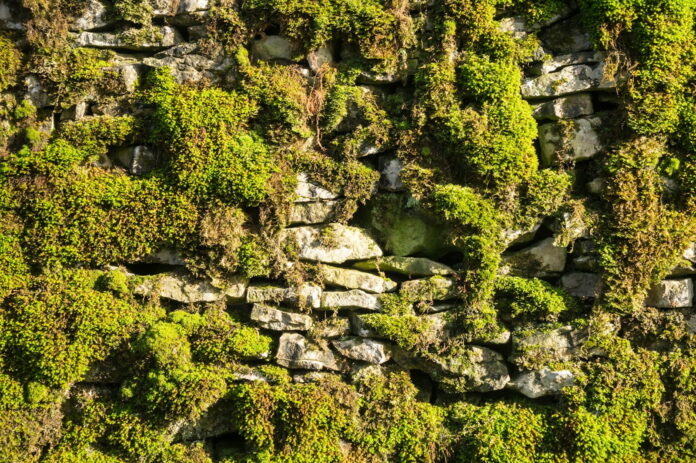Urban areas are increasingly becoming aware of the need for sustainable living. Amid concrete jungles, green spaces are not just aesthetic additions but necessary interventions for ecological balance. A creative and effective way to introduce more greenery into cities is through the installation of moss walls. These living walls not only beautify urban environments but also provide a host of eco-benefits.
Urban Landscapes Transform with Moss
Urban landscapes are often characterized by towering skyscrapers, bustling streets, and a palette dominated by grey. Moss walls, however, are changing this narrative by bringing vibrant hues of green into the urban scenery. These vertical gardens are not just aesthetically pleasing but also serve as natural air filters, capturing dust and pollutants while producing oxygen. As cities struggle with limited space for traditional parks and gardens, moss walls offer a space-efficient solution that can transform walls and facades into lush, living tapestries.
The integration of moss walls into urban architecture is a testament to the adaptability and resilience of nature. They can be installed in a variety of settings such as office buildings, public spaces, and residential areas, bringing a touch of nature to the most unexpected places. These walls also have a psychological benefit; they create a calming and restorative environment for city dwellers who often crave a connection with nature amidst the concrete surroundings.
Moss walls contribute to the reduction of urban heat islands – a phenomenon where city centers become significantly warmer than their rural surroundings. The natural cooling effect of evapotranspiration from the moss helps to regulate temperatures, making urban environments more comfortable and reducing the need for energy-intensive air conditioning.
Moss Walls: Pioneers in Urban Ecology
Moss walls are emerging as pioneers in the field of urban ecology, demonstrating how living systems can be integrated into built environments. As self-sufficient ecosystems, moss walls are low-maintenance and do not require soil to grow, making them an ideal choice for vertical applications. They can be hydroponically cultivated, which conserves water and minimizes the need for additional resources. This innovative approach to urban greening exemplifies how we can work with nature to create more sustainable cities.
These verdant installations also serve as habitats for urban wildlife, providing much-needed sanctuaries for insects and birds within cityscapes. By enhancing biodiversity, moss walls play a crucial role in maintaining ecological balance, which is often disrupted by urban development. This not only benefits the wildlife but also enriches the urban experience for residents, fostering a greater appreciation for the natural world.
Moss walls also have the potential to educate the public about ecology and sustainability. They act as living labs that can be used to raise awareness about the importance of green spaces and the role of plants in air purification, humidity regulation, and energy conservation. Engaging with moss walls can inspire urban dwellers to participate in green initiatives and advocate for more eco-conscious city planning.
Harnessing Moss for Sustainable Cities
In the quest for sustainable urban development, moss walls represent a practical and innovative solution. They help to mitigate the negative impacts of urbanization by improving air quality, enhancing biodiversity, and contributing to the aesthetic and psychological well-being of city residents. As sustainable cities aim to reduce their carbon footprint, moss walls provide a natural form of insulation, keeping buildings warmer in winter and cooler in summer, effectively reducing energy consumption.
Furthermore, moss walls can play a significant role in stormwater management. They are capable of absorbing and retaining large amounts of water, which can help to reduce runoff and the risk of flooding in urban areas. This is particularly valuable in cities where impermeable surfaces dominate and natural water absorption is limited. By harnessing the natural properties of moss, cities can address the challenges of water management in a green and efficient way.
The scalability of moss walls also means that they can be adapted to fit various urban contexts, from small installations in homes and offices to large-scale projects that cover entire building exteriors. This flexibility allows for widespread implementation, making the greening of cities an achievable goal. As urban planners and architects continue to seek sustainable solutions, moss walls stand out as a symbol of ecological innovation and a step towards greener, more resilient cities.
Moss walls are more than just a trend; they are a transformative element in the quest for greener, more sustainable urban environments. By revitalizing urban landscapes, pioneering in urban ecology, and contributing to the sustainability of cities, moss walls offer a host of eco-benefits that align with the goals of modern urban development. As cities continue to grow and evolve, the integration of natural elements like moss will be crucial in ensuring that urban spaces remain livable, beautiful, and ecologically balanced. The future of urban greening is not just about planting more trees; it’s about embracing innovative solutions like moss walls that can coexist with urban infrastructure, providing a blueprint for sustainable living in the 21st century and beyond.
